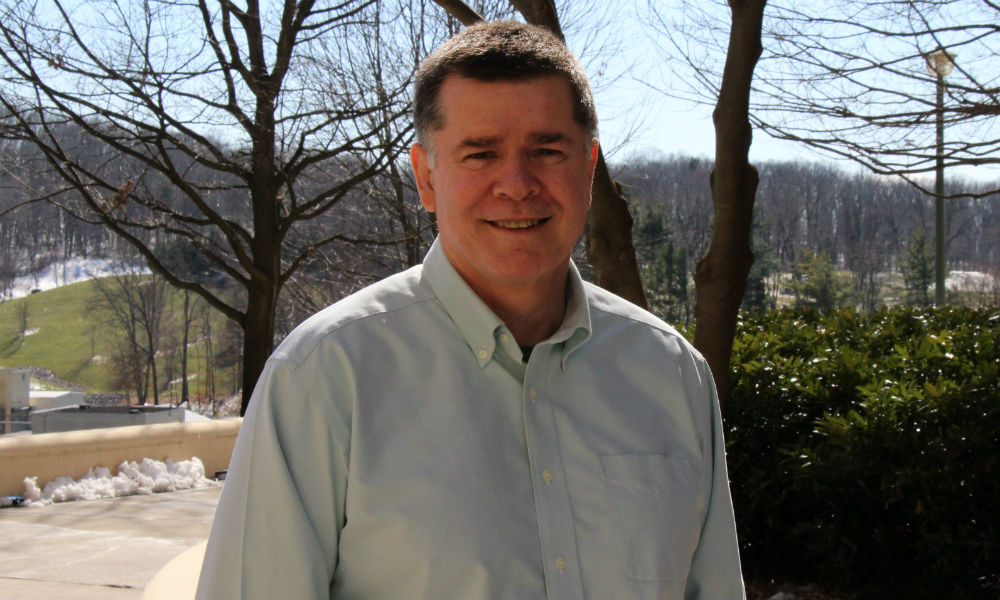Integrating system dynamics and system thinking
ISAT faculty spotlight - Rod MacDonald
ISAT
By: Daniel Vieth and Stephen Roddewig
One of the most important aspects of the Department of Integrated Science and Technology (ISAT) can be found right in the title; the integration of different fields of knowledge. Faculty help accomplish this by bringing together different backgrounds in their teaching and research. One example is Rod MacDonald, who joined the ISAT faculty last semester. MacDonald has over 25 years of experience using computer-aided system dynamics modeling to analyze public policy. “They were looking for someone with my expertise, as it connects really well to other specialties in the department,” said MacDonald. “I was also really impressed with JMU and the program; it was a perfect fit.”
Before his public policy work, MacDonald spent two and a half years in the Peace Corps as a drought relief technical officer in Botswana, Africa. “Instead of giving out food, the Botswana government pays farmers suffering from drought to work on public improvement works projects, such as building roads, schools and local health clinics,” MacDonald explained. “I was sort of an administrator, making sure materials and supplies were getting to the right places at the right time.” During this time, MacDonald was inspired to go back to school by his supervisor, a local Motswana man who had earned his master’s degree in public administration from UCLA.
MacDonald returned to the US to work toward a master’s degree of public administration from State University of New York at Albany and completed his studies in 1991. After graduating, he worked on public policy for various local, state and federal agencies, as well as businesses ranging from Boeing to small medical groups, until coming to JMU in 2016. MacDonald also earned his Ph.D. in public administration during that time from Rockefeller College of Public Affairs in 2002.
While in school, MacDonald found his passion for system dynamics modeling, creating computer simulations to analyze potential outcomes for public policies. “What we want to know is how these public policies will play out in the future. With computer simulation models, we can replicate historically what has happened to give us confidence in what’s going on in the future,” MacDonald explained. “The idea is to find that if we introduce a policy, would we be better off or worse? With a simulation model, we can go in and explain why.”
MacDonald has created models analyzing legislative policies on topics like health policies, environmental conservation, tobacco use, electronic cigarettes and traffic safety. Currently, MacDonald is collaborating with the New York State Department of Health on an initiative called ‘End the Epedimic,’ where he is modeling the effectiveness of HIV/AIDS health policies. “They’re looking into policies that would help reduce the number of new cases and eventually end the epidemic,” MacDonald explained. “The numbers are falling, but they are looking for ways to make them fall faster.”
This semester, MacDonald is teaching two classes that involve system dynamics modeling; Modeling and Simulation (ISAT 341) and a brand new course, Intro to System Thinking (ISAT 290). MacDonald will use pre-built models to introduce students to problem solving with system dynamics. “It takes a long time to develop not only the technical skills, but also the conceptual skills to really think about these complex problems,” said MacDonald. “With pre-built models, we can guide students through the problem-solving process, and have them thinking independently and applying those skills.”
MacDonald sees teaching as a way of giving back to those who helped him get to where he is today. “I had always planned on retiring into teaching,” MacDonald said. “I felt an obligation to those who had trained me in this field.” MacDonald also finds that his students offer just as much valuable knowledge as the faculty. “There’s wisdom in the students too,” said MacDonald. “I feel like I’m being educated too by working at JMU.”
“I often think about where I fit in in the Integrated Science and Technology Program, and I’ve found that system dynamics and system thinking truly is the integrated part,” MacDonald added. “We’ve got people doing science and people doing technology, but my work integrates these two by asking how we can tie all these things together to look at the big picture.” When he is not teaching or researching, MacDonald enjoys cycling across Harrisonburg. “I haven’t refilled my gas tank since I started here!” MacDonald exclaimed.
